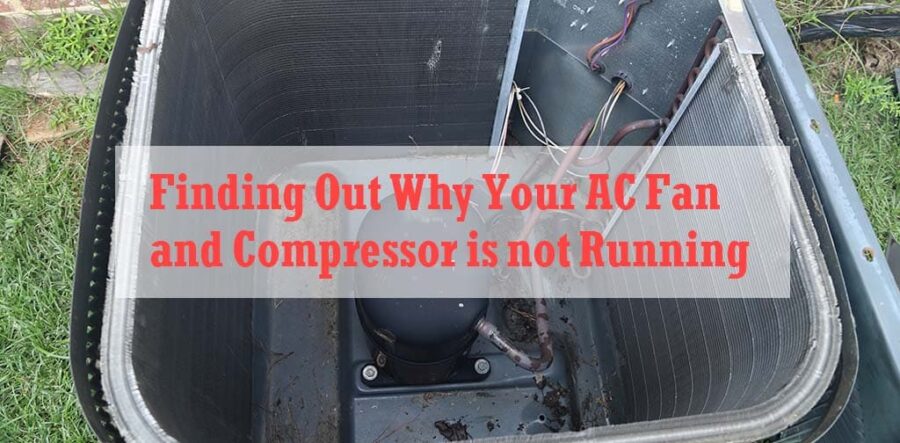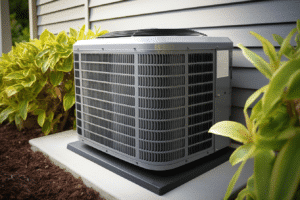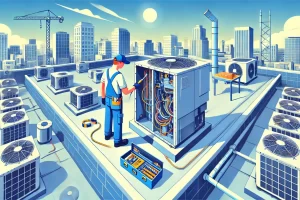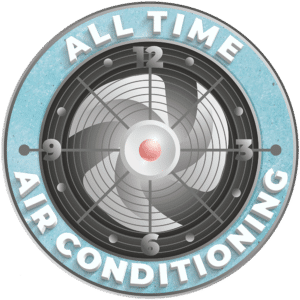Why is my AC Fan and Compressor not Running?
Your split cooling system can’t work unless your indoor evaporator and the outside condenser or compressor are fully operational. If one unit is operating, but the other is not, then you’ll be out of luck even if the blower fan is working. The system won’t cool your home if both sides of the system are not operational.
When this happens, you can try these tips:
• Make sure the AC Is still turned on. Usually, there is a power switch in a small box on the outside of the unit.
• Check your circuit box to make sure a breaker for the exterior of your home hasn’t been tripped. If it has, turns the break all the way off and then reactivates it. If this continues to happen, you will want to contact your local trusted electrician to determine why the breaker is continuously tripping.
• Make sure the thermostat is set to a cold temperature that is lower than the room temperature. If this is the problem, there is a chance your inside unit isn’t working either.
Other Issues That Might Be Caused By A Malfunctioning AC Unit
If your outdoor unit is broken down, but the inside unit is still operational, then the problem might be a broken compressor, which is typically a significant repair that might even lead to a system replacement. Try to resist the temptation only to replace the outdoor condenser/compressor if the idea of repairing it is hopeless. It is usually a better idea from an efficiency and performance standpoint to purchase an integrated system rather than buying a mixed pair of indoor and outdoor units. Other potential issues that may shut down your outdoor unit include frozen coils, a condenser fan malfunctioning, an electrical problem, or an issue with the refrigerant line.
If you need a simple way to test if your fan’s capacitor is faulty:
Slide a long and thin wooden stick through into the grate of the fan and gently push on a blade to see if you can get it spinning. Do not use any kind of conductive material or metals to do this, and definitely do not use a finger in or near the grate.
If the fan begins to spin and doesn’t stop, then there is a good chance that you have a bad start capacitor, and you merely took over the job of kick-starting the fan when you pushed the blade.
If the fun doesn’t start running at all, you might have a faulty fan motor. If there is difficulty in making the blades turn, then you might have debris wrapped around the fan axle, or a motor with dirty or jammed bearings.
Power is stored in the capacitors and may still be able to give you an electric shock even with the A/C being powered down.
DO NOT make physical contact with the capacitor terminals, or you may receive a shock!
- Make sure all power to the air conditioner is shut off at the breaker panel or disconnect. You can find the location on the side of the building nearby of the outdoor Air conditioning unit. Do not proceed any further if you are unsure if you’ve appropriately shut down the power.
- Remove the service panel attached to the A/C Unit.
- Locate the fan’s start capacitor. The fan’s start capacitor is a small, cylinder or oval-shaped metallic object with two or sometimes three prongs at the top used for wire connections.
- While not always the case, common signs of a faulty capacitor include corrosion, leaking fluids, and a swollen top or rusted bottom. Do not make physical contact with any leaking fluid or capacitor terminals.
No Two Air Conditioning Units are the Same
Depending on the kind of A/C unit, the fan motor and compressor may use the same capacitor. This is known as a “dual Capacitor” and has three terminals located on the top. One is for the fan motor, another for the compressor, and the last is shared. There is a chance of your compressor overheating if it continually tries to access a failed capacitor, which will cause significant damage.
You must shut down the power to the A/C unit before opening the service panel, and the energy stored in the capacitor discharged before it can be removed. If not, then touching tow capacitor terminals at once will shock you. You might even cause a fire if you attempt to dispose of a capacitor that hasn’t been discharged.
Select the correct replacement and attach the wires correctly after safely removing the bad capacitor.
What causes a capacitor to fail?
Capacitors will lose the ability to hold a charge over time, much like batteries. They can also suffer damages from high temperatures and voltage. The heat of the motor mixed with blazing outdoor temperature can cause the capacitor to overheat and fail. A regularly scheduled A/C maintenance can help spot potentials issues with the capacitor before you are left on a hot day without an A/C to keep you cool.










Leave a Reply
Your email is safe with us.